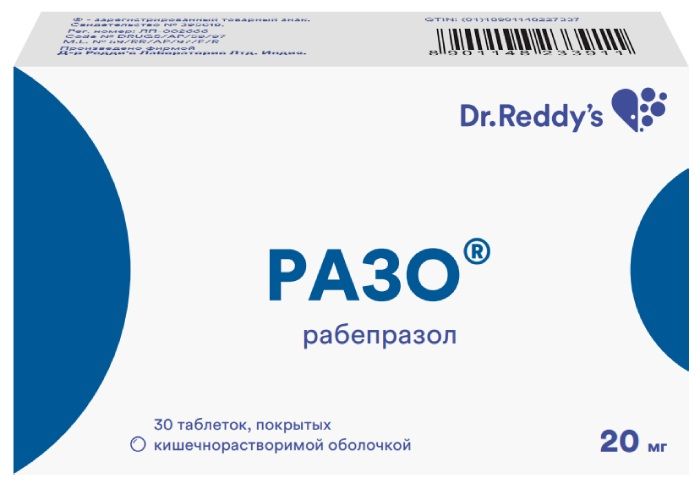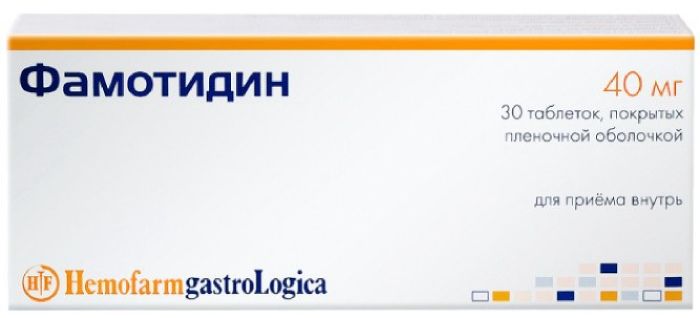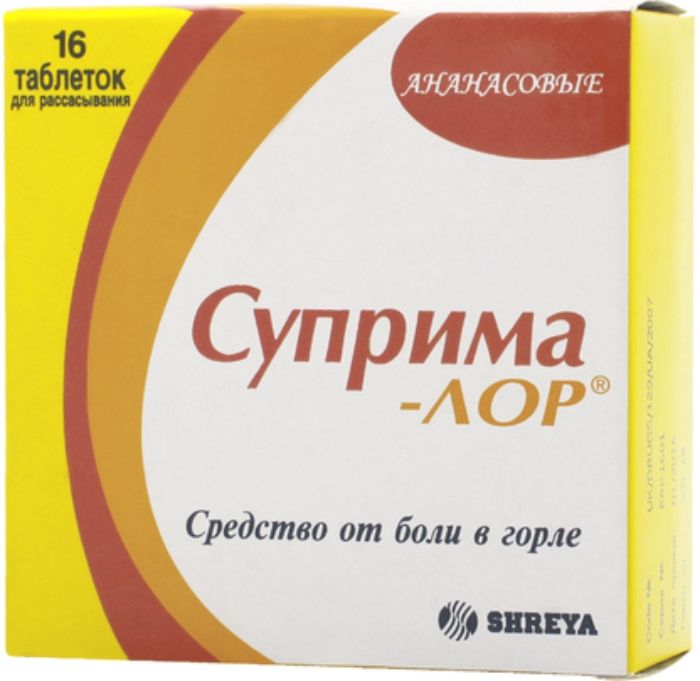- No products in the cart.
Razo kish.rastv tab. 20mg 30 pc
$9.32
Razo kish.rastv tab. 20mg 30 pc
Description
Composition
Active substance:
1 tablet contains: Rabeprazole sodium 20 mg.
Excipients:
Mannitol 97.01 mg, 14.40 mg low substituted giproloza, magnesium oxide heavy 40.00 mg Hypromellose (5cps) 3,00 mg sodium lauryl sulfate 1.80 mg Talc 1.54 mg Magnesium stearate 2.25 mg. Sheath: 4.90 mg of zein, triethyl citrate 0.49 mg. Sheath enteric: methacrylic acid-ethyl acrylate copolymer [1: 1] (methacrylic acid copolymer (type C)) 19.28 mg triethyl citrate 1.92 mg talc 1.04 mg. Coating: Opadry Yellow OY-52945 5.05 mg (hypromellose 5 cP 63.65% titanium dioxide (E171) 28,55% macrogol 400, 6.30% iron oxide yellow dye (E172) 1,50%) .
Composition of black ink for inscribing the 10 mg tablet: shellac glaze (45%) 44.467% colorant ferric oxide black (E172) 23,409%, 26.882% isopropyl alcohol, n-butanol, 2.242% propylene glycol 2.0% ammonia solution was concentrated 28% – 1.0%.
Red ink composition for inscribing the 20 mg tablet: shellac glaze (45%) 59.0% colorant red amazing (E129) 15.0%, n-butanol, 7.0%, 6.0% denatured ethanol, titanium dioxide (E171) 5.0% propylene glycol 4.0%, isopropyl alcohol 3.0% concentrated ammonia solution 28% – 1.0%.
Description:
Round, biconvex film-coated tablets from light yellow to yellow with red markings «RB20» colors on one side. On the cross-section of the core is almost white.
Product form:
The tablets, enteric-coated tablets, 20 mg.
At 15 or 30 tablets of a high density polyethylene jars with screw neck provided with a membrane to control the first opening, sealed with plastic screw cap with a gasket and a package embedding a desiccant (silica gel) and polyester cotton swab. Each of the bank together with instructions for use in paper cartons.
15 tablets from a blister (PVC / AL / PA) foil / aluminum foil. 1 or 2 blisters together with instructions for use in a cardboard pack.
Contraindications
Hypersensitivity to rabeprazole, substituted benzimidazoles or auxiliary components of the drug; pregnancy; lactation (lactation); Children up to age 12 years.
Carefully
Severe renal insufficiency, severe hepatic failure, children’s age.
Dosage
20 mg
Indications
– Gastric ulcer in the acute stage and anastomotic ulcer; – duodenal ulcer in the acute stage; – erosive and ulcerative gastroesophageal reflux disease or reflux esophagitis; – maintenance treatment of gastroesophageal reflux disease; – non-erosive gastroesophageal reflux disease; – Zollinger-Ellison syndrome and other conditions characterized by pathological hypersecretion.
In combination therapy: – Helicobacter pylori eradication in patients with gastric ulcer and duodenal ulcer or chronic gastritis.
Interaction with other drugs
The invitro studies in human liver microsomes have shown that rabeprazole is metabolized in the liver isoenzymes CYP2C19 and CYP3A4.
Rabeprazole not enter into clinically significant interactions with amoxicillin and other drugs metabolized by cytochrome P450 isozymes system in the liver: warfarin, phenytoin, theophylline and diazepam.
Due to the fact that the rabeprazole causes pronounced and prolonged decline in production of hydrochloric acid, it was noted the interaction while receiving with the drugs, the absorption of which depends on the acidity of gastric contents. In healthy volunteers receiving rabeprazole caused a decrease in the concentration of ketoconazole in blood plasma by 30% and increase of the minimum concentration of digoxin by 22%. At the same time taking rabeprazole with ketoconazole or digoxin need to adjust their dose.
When simultaneous administration of atazanavir 300 mg / 100 mg ritonavir with omeprazole (40 mg once a day 1) or atazanavir 400 mg lansoprazole (60 mg 1 time per day) to healthy volunteers showed significant lowering effects of atazanavir. Absorption atazanavir is pH dependent. Thus, it is not recommended simultaneous reception of atazanavir with proton pump inhibitors, including rabeprazole.
Rabeprazole and concentration of the active metabolite of clarithromycin in plasma while taking increased by 24% and 50%, respectively. This effect is used during the eradication of Helicobacter pylori.
Simultaneous treatment with rabeprazole and methotrexate can lead to increased concentrations of methotrexate and its metabolite gidroksimetotreksata and increase the time of their removal.
Not found rabeprazole interaction with liquid antacids.
No clinically significant interaction with food rabeprazole.
Overdose
Symptoms. Data on intentional or accidental overdose is minimal. Reported taking the drug at a dose of 60 mg 2 times a day, or 160 mg dose, the side effects were minimal and reversible and did not require medical intervention.
Treatment. A specific antidote for the drug Razo® unknown. Rabeprazole well bound to plasma proteins so poorly displayed during dialysis. In case of overdose should be carried out is symptomatic and supportive treatment.
pharmachologic effect
Pharmacological group:
Gastric glands secretion lowering agent – a proton pump inhibitor.
Pharmacodynamics:
Mechanism of action. Rabeprazole relates to a class of antisecretory compounds which chemically are substituted benzimidazoles. The drug inhibits the enzyme activity of H + / K + ATPase ( “proton pump”), thereby blocking the final step of the synthesis of hydrochloric acid. This effect is dose dependent and leads to inhibition of both basal and stimulated acid secretion irrespective of stimulus. As a weak base in any dose rabeprazole is rapidly absorbed and concentrated in the acidic environment of the parietal cells.
Antisecretory activity. After ingestion of 20 mg of rabeprazole antisecretory effect occurs within one hour. Inhibition of basal and stimulated acid secretion 23 h after the first dose of rabeprazole sodium is 62 and 82%, respectively, and lasts up to 48 hours. Such pharmacokinetic duration of action is much greater than for a predictable period of half-life (approximately 1 hour). This effect can be explained by binding prolonged drug with H + / K + ATPase of the parietal cells of the stomach. The magnitude of the inhibitory effect of sodium rabeprazole in acid secretion reached a plateau after three days of rabeprazole sodium. When a reception secretory activity is restored in 1-2 days.
Effect on serum gastrin concentration. At the beginning of therapy rabeprasol gastrin concentration in serum is increased, which is a reflection of an inhibitory effect on the secretion of hydrochloric acid. Gastrin concentration returned to its initial level usually within 1-2 weeks after cessation of treatment.
Effect on enterohromafinnopodobnye cells. Study biopsies bottom and antrum in more than 500 patients treated with sodium rabeprazole or drug comparisons for up to 8 weeks showed no change in the morphological structure enterohromafinnopodobnyh (ECL) cells, severity of gastritis, incidence of atrophic gastritis, intestinal metaplasia or prevalence of Helicobacter infection pylori.
In a study of 400 patients treated with rabeprazole 10 mg / day or 20 mg / day for up to 1 year, the incidence of hyperplasia was low and comparable with that of patients receiving omeprazole 20 mg / day. It was not registered a single case of adenomatous changes or carcinoid tumors observed in rats.
Other effects.
Currently, there is no evidence that rabeprazole cause systemic effects on the central nervous system (CNS), cardiovascular and respiratory systems. When administered orally at a dose of 20 mg for 2 weeks rabeprazole no effect on thyroid function, carbohydrate metabolism as well as on blood concentrations of parathyroid hormone, cortisol, estrogen, testosterone, prolactin, secretin, glucagon, follicle stimulating hormone, luteinizing hormone, renin, aldosterone, and growth hormone.
Pharmacokinetics:
Absorption – high, the time to reach maximum concentration (TCmax) – 3,5 hour. Changes in the maximum concentration (Cmax) and area under the curve values ”concentration-time» (AUC) are linear over a dose range from 10 to 40 mg.
It is metabolized in the liver with CYP2C9 isozyme and CYP3A. Bioavailability – 52%, does not increase with repeated administration. The half-life (T1 / 2) – 0.7-1.5 hours total clearance – 3.8 ml / min / kg. In patients with hepatic insufficiency AUC increased by 2 times, T1 / 2 is increased by 2-3 times. Neither the timing of the doses during the day or antacids do not affect the absorption of rabeprazole. The drug with fatty food slows the absorption of the drug to 4 hours or more, but no Cmax, nor the extent of absorption is not changed. Communication with plasma proteins – 97%.
Excreted by the kidneys (90%) in the form of two metabolites: mercapturic acid conjugate (M5) and a carboxylic acid (M6); through the intestine – 10%. Differences in the pharmacokinetic parameters were observed as a function of the floor.
Pharmacokinetics in special clinical situations
kidney failure
Patients with stable renal insufficiency in the terminal stage, which requires maintenance hemodialysis (creatinine clearance
Liver failure
Patients with chronic compensated cirrhosis rabeprazole well tolerated at a dose of 20 mg 1 time per day, although the AUC is doubled and Cmax increased by 50% as compared with healthy volunteers.
elderly patients
In elderly patients, elimination of rabeprazole has slowed somewhat. After 7 days of rabeprazole in a dose of 20 mg 1 time per day in the elderly AUC was approximately twice as large, and Cmax increased by 60% compared with young healthy volunteers; signs of accumulation of rabeprazole were noted.
CYP2C19 polymorphism
Patients with sustained metabolism CYP2C19 after 7 days of rabeprazole in a dose of 20 mg per day AUC increased 1.9 times, and the half-life of 1.6 times compared with the same parameters in the “fast metabolizers”, while Cmax increased by 40%.
Pregnancy and breast-feeding
Safety data application rabeprazole during pregnancy does not. Reproduction studies in rats and rabbits revealed no evidence of impaired fertility or fetal development defects caused by rabeprazole; however the rat small quantities of the drug penetrates the placental barrier. Rabeprazole, should not be used during pregnancy. It is not known whether rabeprazole is excreted in breast milk. Appropriate studies in lactating women have not been conducted. However rabeprazole detected in the milk of lactating rats, and the drug can not be applied during breastfeeding.
Conditions of supply of pharmacies
Prescription.
side effects
Rabeprazole is usually well tolerated by patients. Side effects are generally mild to moderate and are transient in nature.
The incidence of side effects is described according to the following gradation: very often (> 1/10); often (1/10 – 1/100); infrequently (1/100 – 1/1000); rarely (1/1000 – 1/10000); very rarely (
Disorders of the nervous system: rarely – headache, dizziness.
Disorders of the gastrointestinal tract: often – constipation, diarrhea, abdominal pain, mucosal dryness of the mouth, flatulence; rarely – hepatitis, jaundice; in patients with liver cirrhosis – hepatic encephalopathy.
Disorders of the skin and subcutaneous tissue disorders: rarely – urticaria, bullous eruptions, Lyell syndrome (toxic epidermal necrolysis), Stevens-Johnson syndrome (a severe erythema multiforme, characterized by the appearance of stains and blisters on the skin and mucous membranes against high temperature and joint pain ).
Violations by musculoskeletal and connective tissue disorders: rarely – myalgia, arthralgia.
Violations by the kidneys and urinary tract: very rarely – interstitial nephritis.
Laboratory and instrumental data: rarely – thrombocytopenia, neutropenia, leukopenia, leukocytosis, increased activity of “liver” enzymes (transaminases), hypomagnesemia.
May increase the risk of bone fractures (see. Section “Special Instructions”).
special instructions
Patient response to therapy sodium rabeprazole not exclude the presence of malignancies in the stomach.
Before and after treatment required endoscopic examinations to rule out malignancy, as treatment may mask the symptoms and defer the correct diagnosis.
Caution is recommended at the first appointment preparation Razo® patients with severe hepatic impairment.
Patients with impaired renal or hepatic function dose adjustment is required Razo® preparation. AUC rabeprazole sodium in patients with severe impairment of liver function is approximately two times higher than in healthy patients.
The drug has no effect on thyroid function, carbohydrate metabolism, concentration in blood parathyroid hormone, cortisol, estrogen, testosterone, prolactin, cholecystokinin, secretin, glucagon, follicle stimulating hormone, luteinizing hormone, renin, aldosterone, and growth hormone.
According to observational studies of treatment with proton pump inhibitors may lead to an increased risk of osteoporosis-related fractures of the hip, wrist and spine. The risk of fracture was increased in patients receiving high doses of proton pump inhibitors year or more.
Effects on ability to drive and perform other activities that require concentration and speed of psychomotor reactions
Based on the features of the pharmacodynamics of rabeprazole and its profile of adverse effects, it is unlikely that the drug Razo® affects the ability to drive and perform other activities that require concentration and speed of psychomotor reactions. However, in case of drowsiness, dizziness, avoid these activities.
Storage conditions
At a temperature not exceeding 25 C. Keep out of reach of children !.
Dosing and Administration
Razo® pill taken orally as a whole, without chewing or crushing. It was found that neither the time of day nor food intake does not affect the activity of rabeprazole.
In gastric ulcer in the acute stage and anastomotic ulcer recommended ingest 20 mg once a day. Typically, recovery occurs after 6 weeks of treatment, but in some cases the duration of treatment can be increased.
When duodenal ulcer in the acute stage is recommended to be taken orally 20 mg once a day. The duration of treatment is from 2 to 4 weeks. If necessary, the duration of treatment can be extended for another 4 weeks.
In the treatment of peptic ulcer and erosive reflux disease or gastroesophageal reflux oesophagitis recommended to ingest 20 mg once a day. The duration of treatment is from 4 to 8 weeks. If necessary, the duration of treatment can be extended for another 8 weeks.
When maintenance treatment of gastroesophageal reflux disease is recommended to be taken orally 20 mg once a day. The duration of treatment depends on the patient’s condition.
When non-erosive gastroesophageal reflux disease is recommended ingest 20 mg once a day.
If after four weeks of treatment, the symptoms do not disappear, it is necessary to conduct an additional examination of the patient. After the relief of symptoms in order to prevent their further occurrence should take the drug orally once daily on demand.
For the treatment of Zollinger-Ellison syndrome and other conditions characterized by pathological hypersecretion, dose picked individually. Starting dose – 60 mg a day, and then increase the dose administered drug dose to 100 mg per day in single or receiving 60 mg twice a day. For some patients, the fractional drug dosing is preferred. Treatment should continue as clinically necessary. Some patients with Zollinger-Ellison syndrome rabeprazole treatment duration can be up to one year.
For Helicobacter pylori eradication is recommended to be taken orally 20 mg twice a day in a specific pattern with the appropriate combination of antibiotics. Treatment duration was 7 days.
Patients with renal or hepatic insufficiency.
Dose adjustment in patients with renal impairment is not required.
Patients with mild to moderate hepatic impairment rabeprazole concentration in blood is generally higher than in healthy patients.
In appointing Razo® drug to patients with severe hepatic insufficiency Caution should be exercised.
Elderly patients.
No dose adjustment is required.
Children.
Safety and efficacy of rabeprazole in children aged 12 years and over is set for short-term (up to 8 weeks) treatment of GERD. The recommended dose for children aged 12 years and older is 20 mg 1 time per day for up to 8 weeks. The safety and efficacy of rabeprazole in pediatric patients for use in other indications has not been established.
Information
Appearance may differ from that depicted in the picture. There are contraindications. You need to read the manual or consult with a specialist
Additional information
| Weight | 0.100 kg |
|---|---|
| Manufacturer | DR.REDDIS |













There are no reviews yet.